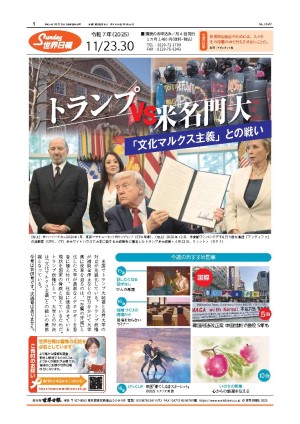米軍事力の回復 Restoring American arms
背後から指導するのでは大統領は何も成功しないし、それは犯罪的愚行とほぼ変わらない。8年過ぎて、「指導のやり方」についてのオバマ・ドクトリンは、当然の経過をたどっており、そして米軍事力を衰退させた。ドナルド・トランプ次期大統領は、米国の軍隊の現状およびそれを正すのに何をしなければならないかについて、必要とされる明敏な見解を持っている。それは安価では済まないが、戦争に負けることも、同じである。
「ヘリテージ財団」第3回年次米軍事力指標は、米軍事力を「最低レベル」だと格付けし、特に陸軍は「弱い」とした。米国の軍隊は世界でベストであり、最高にイカしているという一般の考え方とぶつかる絵だ。ミッションを成し遂げるための兵員や物資なしに、最も勇敢な者たちが、他の皆と同じように、血を流すのだ。イランやアフガニスタンにおける15年間の戦闘は犠牲者を出しているが、オバマ大統領はそれに対してどんなこともするのをためらっている。
経費節減のための軍隊の削減が行われようとしており、正規の陸軍の人数を、今年は47万5000人、2017年は46万人に減らそうというものだが、これは真珠湾攻撃以来最少の規模となろう。そういった縮小は、軍事力の16%のロスを招いたが――旅団戦闘団、戦闘航空旅団など――前線の戦士の数となると、その数は倍のロスなる。「要約すると」ヘリテージの指標は、「陸軍は、より小さく、より古く、より弱くなっていて、近い将来、この状態は変わりそうにない」という見方を示している。
海軍、空軍、海兵隊、そして米核戦力は、それぞれ「限界」の評価だが、わずかばかりましだ。しかし、そういう状態だと、軍務に現行の作戦行動を維持するための長期的即応力を犠牲にすることが求められる。実際問題として、老朽化を避けるために、必要な船舶や航空機をもっとたくさん造らなければならないということである。空軍はパイロットが700人不足しており、海兵隊の航空機隊のわずか43%しか、すぐに飛行する態勢にない。
米国の軍事力の究極の判断基準は、二つの大規模な地域戦争を同時に戦う能力から、数個の小規模な紛争に対処しながら一つだけの大規模戦争を戦えるというところに落ち込んだ。小規模化した能力でさえ、まだ締め付けを迫られている。「今のような態勢だと、米軍事力は米国の死活的国家利益を守るという要請に応える最低ぎりぎりの力しか持てないだろう」と、ヘリテージの研究は見ている。
よりソフトで、より親切で、より優しく、より小さな米軍事力であった方がグローバルな敵意を和らげるだろうという、オバマ氏の断固たる信念は、国の軍備が待機していてしなければならないことに対する悲惨な無知を反映しているのだ。単刀直入に言えば、陸軍も海軍も人を殺したり、物を壊したりする力がなくてはならないのだ。たとえ、必要な人数がいくらであっても。ウラジーミル・プーチンの東部の隣国への挑発行為、イランのイラクやシリア、またイエメンでの残虐な行為、中国の南西太平洋海域での覇権主義的行為、そして北朝鮮の核を振りかざして暴れている軍国主義者などは、そのことに対する冷静な理解を映し出している。
ドナルド・トランプ次期大統領の米軍の再建の青写真は、陸軍は54万人態勢にし、海軍は272の船舶から350に増やし、空軍は戦闘機を1159機から1200機に増やし、海兵隊は、36大隊に増強するというヘリテージの基準値と共通している。トランプ氏の計画の成功は、今年度の5億8000万㌦の国防予算を超える、緊急時に必要な増額を賄うことができるだけの米国経済の急成長に懸かっている。
ピュー・リサーチ・センターの調査によって、有権者の80%が重要性の点で、ただ経済だけには負けて、テロを2番目の問題だと挙げていることが分かった。2015年にテロ攻撃が過去11年間の最高値になったと「経済協力開発機構(OECD)」諸国が報告しているが、彼らの心配には十分な根拠がある。危険な世界から受ける増大する脅威からの保護は、米軍にとっての「何よりも優先してしなければならない仕事」である。トランプ氏と彼の国防チームが米国人を安全に保てるだけの財政力を持つことが、絶対不可欠なのである。それ以下のことは、愚にもつかない話である。
(11月22日付)
Leading from behind gets a president nowhere, and is little short of criminal folly. After eight years, the Obama doctrine of “leadership” has run its course and has left the American armed forces seriously depleted. President-elect Donald Trump has the needed clear-eyed view of the U.S. military as it is and what must be done to fix it. It won’t be cheap, but losing a war isn’t, either.
The Heritage Foundation’s third annual Index of U.S. Military Strength rates the nation’s armed forces as “marginal,” and the Army in particular as “weak.” It’s a picture that clashes with the popular notion that America’s armed forces are the best and baddest in the world. Without the men and materiel to accomplish their mission, the bravest bleed like everybody else. Fifteen years of fighting in Iraq and Afghanistan has taken its toll, and President Obama has balked at doing anything about it.
Money-saving troop cuts are on track to reduce regular Army numbers to 475,000 this year and to 460,000 in 2017, which would be the smallest force since Pearl Harbor. The contraction has led to a 16 percent loss in strength but double that number in front-line warriors – brigade combat teams and combat aviation brigades. “In summary,” the Heritage index observes, “the Army is smaller, older, and weaker, a condition that is unlikely to change in the near future.”
The Navy, Air Force, Marines and U.S. nuclear force fare only slightly better, each earning a “marginal” rating. But doing so requires the services to sacrifice long-term readiness in order to maintain current operations. In practical terms, it means building more of the needed ships and planes to avoid obsolescence. The Air Force is 700 pilots short and only 43 percent of the Marines’ air fleet is ready to fly.
The gold standard of U.S. military capability has slipped from the ability to fight two major regional wars simultaneously to one, while dealing with several minor conflicts. Even scaled-down capacity is under strain. “As currently postured, the U.S. military is only marginally able to meet the demands of defending America’s vital national interests,” the Heritage study observes.
Mr. Obama’s determined belief that a softer, kinder, gentler, smaller U.S. military would soothe global hostilities reflects a woeful ignorance of what the nation’s arms must stand ready to do. Put bluntly, an army and navy must be capable of killing people and breaking things, and in whatever number is necessary. Vladimir Putin’s needling of his Eastern neighbors, Iran’s deviltry in Iraq, Syria and Yemen, China’s co-opting of the Southwest Pacific waters, and North Korea’s nuclear saber-rattling reflects a cold understanding of that.
President-elect Donald Trump’s blueprint for rebuilding the U.S. military shares benchmarks with Heritage: rebuilding the Army to 540,000 soldiers, boosting the Navy from 272 ships to 350 ships, expanding the Air Force from 1,159 fighter aircraft to 1,200, and increasing the Marine Corps to 36 battalions. The success of Mr. Trump’s plans will depend on a booming U.S. economy to pay for the urgently needed upgrades beyond this year’s defense budget of $580 billion.
A Pew Research Center poll finds that 80 percent of voters name terrorism as an issue second only in importance to the economy. With the Organization for Economic Co-operation and Development countries reporting that terror attacks reached an 11-year high in 2015, their concerns are well-founded. Protection from the growing threats from a dangerous world is Job One for the U.S. military. It’s essential that Mr. Trump and his defense team have the financial resources to keep Americans safe. Anything less is folly.
November 22, 2016





